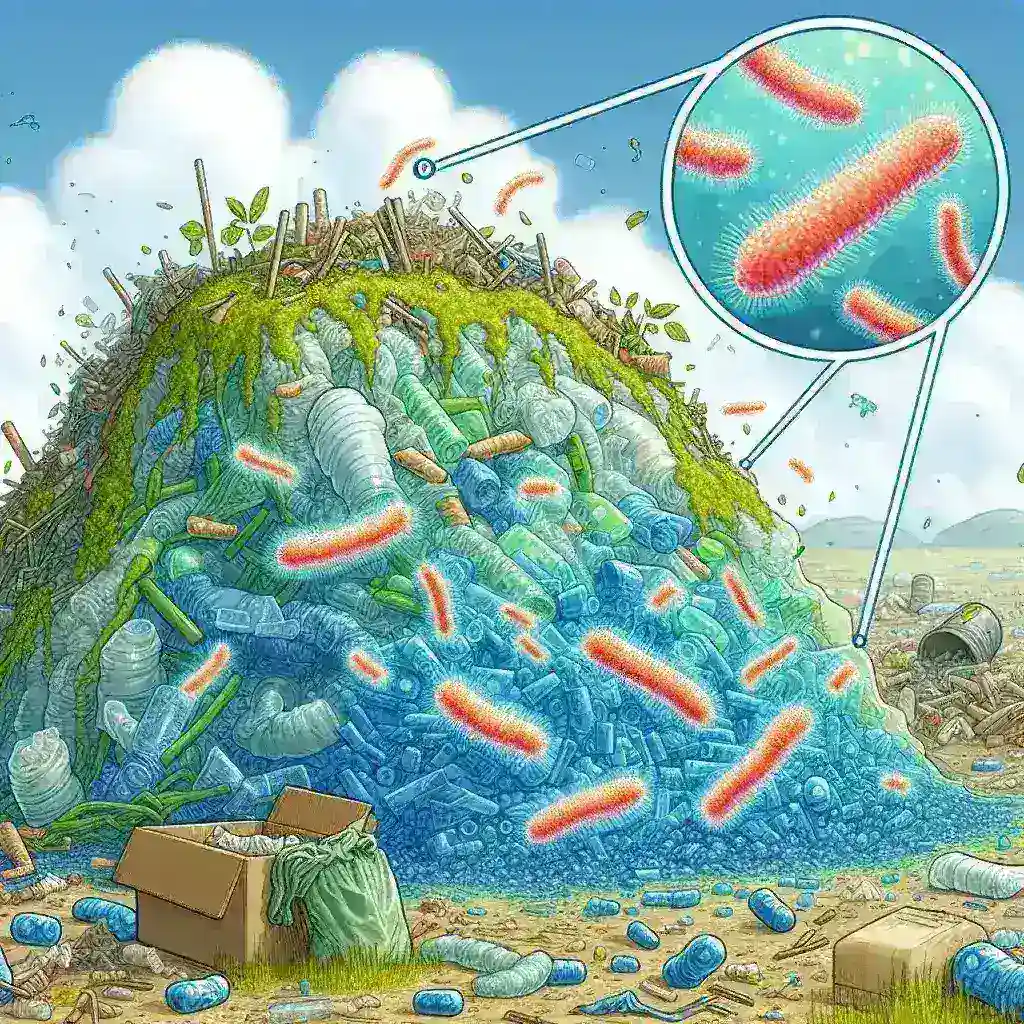
Introduction
In recent years, the alarming rise in plastic pollution has sparked an urgent need for effective solutions to tackle this ecological crisis. With millions of tons of plastic waste generated annually, researchers and scientists are turning their attention towards nature’s own solution: plastic-eating bacteria. This article delves into how these remarkable microorganisms can accelerate the biodegradation of plastic waste, offering a beacon of hope for a cleaner, healthier planet.
Understanding Plastic Pollution
Plastic pollution is a pervasive problem that affects oceans, rivers, and landscapes across the globe. Every year, over 300 million tons of plastic are produced, with a significant percentage ending up in landfills or the environment, where they can take hundreds of years to decompose. The accumulation of plastic not only harms wildlife but also poses serious threats to human health and ecosystems.
The Role of Bacteria in Biodegradation
Biodegradation is the process by which organic substances are broken down by living organisms, primarily bacteria and fungi. While traditional waste management methods, such as recycling and incineration, have their limitations, the discovery of bacteria that can digest plastics opens up new avenues for waste management.
What Are Plastic-Eating Bacteria?
Plastic-eating bacteria, also known as polymer-degrading bacteria, are specialized microorganisms that possess the unique ability to break down plastic polymers into simpler, less harmful substances. These bacteria utilize enzymes that target specific chemical bonds in plastics, effectively decomposing them.
Notable Discoveries
- Ideonella sakaiensis: Discovered in Japan, this bacterium can metabolize polyethylene terephthalate (PET), a common plastic found in bottles.
- Alcanivorax borkumensis: Known for its oil-degrading capabilities, this bacterium also shows potential in breaking down certain types of plastics.
- Bacillus and Pseudomonas species: These genera have demonstrated the ability to degrade various plastic materials under specific conditions.
Mechanisms of Plastic Biodegradation
Enzymatic Breakdown
The primary mechanism through which plastic-eating bacteria degrade plastics is through enzymatic action. Enzymes are proteins that catalyze biochemical reactions. For example, Ideonella sakaiensis secretes an enzyme called PETase, which breaks down PET into its basic components, allowing the bacteria to utilize them as a source of energy.
Environmental Conditions
For plastic biodegradation to occur effectively, certain environmental conditions must be met, including temperature, pH, and the availability of nutrients. Researchers are exploring how to optimize these conditions in natural and controlled settings.
The Pros and Cons of Using Bacteria for Plastic Waste Management
Pros
- Natural Process: Utilizing bacteria for biodegradation is an environmentally friendly approach compared to chemical treatments.
- Cost-Effective: Cultivating bacteria for waste management can be less expensive than traditional recycling methods.
- Reduction in Landfill Use: Enhanced biodegradation can significantly reduce the volume of plastic waste in landfills.
- Potential for Sustainability: Developing bacteria capable of degrading a variety of plastics could help create a closed-loop system for plastic use.
Cons
- Limited Knowledge: Research on plastic-eating bacteria is still in its infancy, and there are many unknowns regarding their long-term effects on ecosystems.
- Contamination Risks: Introducing bacteria into the environment carries risks of unintended consequences, such as disrupting local ecosystems.
- Slow Process: Biodegradation takes time, and in many cases, the process may not be fast enough to keep pace with plastic production.
Future Predictions and Applications
The future of plastic waste management may heavily rely on the continued research and development of plastic-eating bacteria. Experts predict that advancements in biotechnology could lead to:
- Enhanced Enzyme Engineering: Scientists may engineer enzymes with improved efficiency for breaking down a wider range of plastics.
- Bioremediation Techniques: Utilizing bacteria in bioremediation efforts could help clean polluted areas more effectively.
- Integration with Waste Management Systems: Incorporating plastic-eating bacteria into existing waste management frameworks could enhance biodegradation rates.
Real-World Examples
Some organizations and researchers are already pioneering the use of plastic-eating bacteria:
- University of Kentucky: Researchers have isolated a strain of bacteria that can break down polyurethane, a plastic commonly found in foams and coatings.
- Biowaste Innovations: This startup is developing bioreactors that harness bacterial power to transform plastic waste into biodegradable materials.
Conclusion
The emergence of plastic-eating bacteria represents a groundbreaking advancement in the fight against plastic pollution. While challenges remain, the potential of these microorganisms to accelerate the biodegradation of environmental waste is undeniable. By harnessing nature’s capabilities, we may pave the way for innovative solutions that can reduce our plastic footprint and foster a more sustainable future.
Leave a Reply